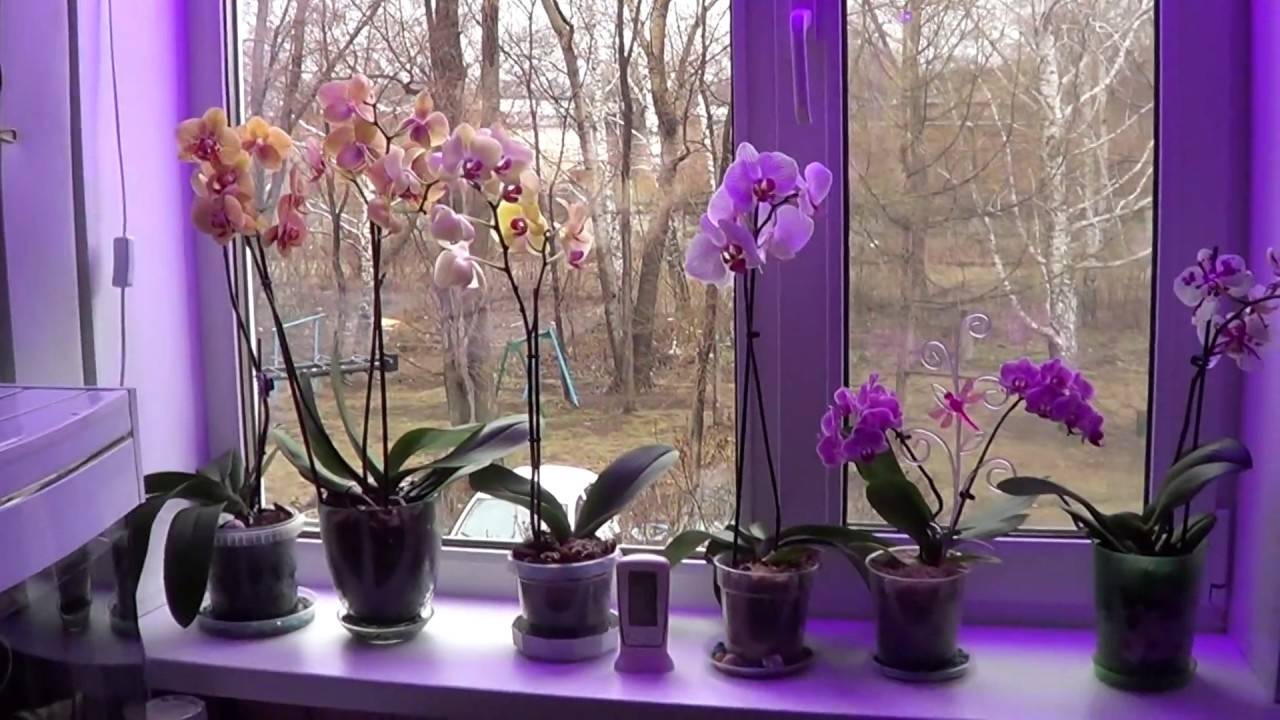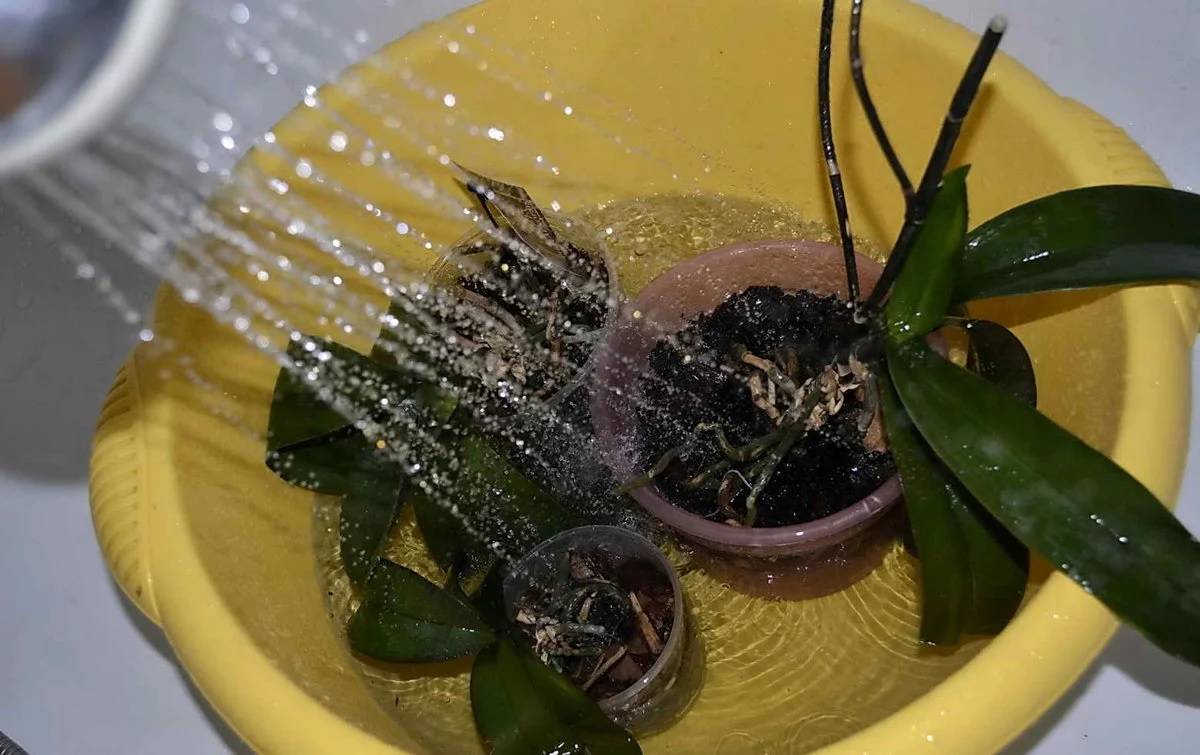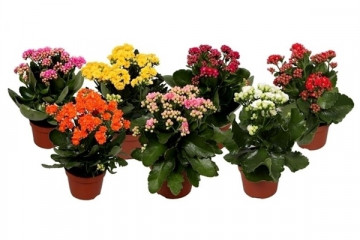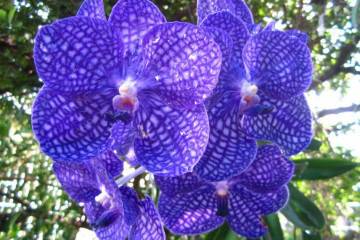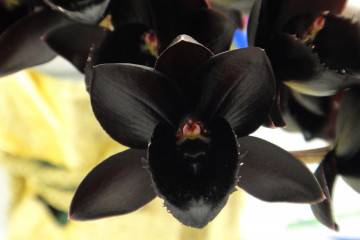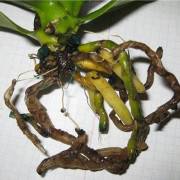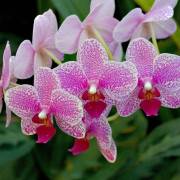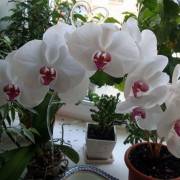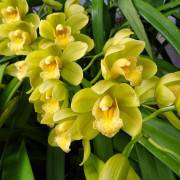Why the orchid does not bloom - possible reasons
Content:
Orchids are popular for their beautiful flowers, unusual shapes and varied colors. With proper care, long-lasting and long-lasting flowering can be achieved. But sometimes the owners of the plant are faced with a situation when the orchid has stopped blooming. The question arises what to do in such a situation.
Orchid flowering period
At home, the orchid can bloom at any time of the year. For this, comfortable conditions must be organized: abundant watering, a sufficient amount of fertilizing with a mineral content, proper lighting.
The number of blooms in an orchid is unlimited. She can bloom every year throughout her life. If the peduncle is not cut off the first time, it can bloom twice.
When to start worrying if not blooming
The peduncle of an orchid appears at the age of 1.5 to 3 years. You can start worrying if the flower is already more than three years old, but does not bloom, or the previously flowering plant does not have buds for several years.
There are situations when the problem can be explained by the development of natural factors that the owner of the flower cannot correct. These include:
- active growing season. This occurs in the spring when the orchid strengthens the green mass and the root system. All the forces of the plant will be involved in this. Laying buds is possible only when the growing process is completed;
- a kind of orchid with individual characteristics, when the arrow is released, buds are formed, but they do not bloom until three months;
- the flower develops a baby. All the forces of the plant go to its formation, so it will not be able to bloom. The process will resume as soon as the baby is separated from the plant. But at the same time, the orchid will still need time to recover;
- the pot should not be installed near the place where the fruit is stored. They produce ethylene, which the flower cannot tolerate.
If none of these factors are suitable, then the flower is signaling that the conditions for its maintenance are not met.
Possible flowering problems
There can be many reasons why an orchid does not bloom, ranging from improper plant care to pest attacks.
Improper watering
Orchid is a tropical plant. It reacts very sharply to violation of watering rules. In nature, the orchid does not bloom during the rainy season. This is due to the lack of pollination. The plant will find itself in the same conditions if it is intensively watered at home with cold water.
To ensure proper moisture saturation, you need to water the flower only when the earth dries up. This is determined by the color of the roots. They turn light or white.
Violation of the feeding regime
Gardeners often use potassium-phosphorus supplements that are mixed with water. This helps to stimulate the flowering process.
In the spring during the growing season, preparations with a high concentration of nitrogen are recommended.
Temperature violation
The condition of a tropical plant will directly depend on the temperature in the room. To keep a flower in an apartment, it is required to create humid and warm conditions. In summer, the optimum temperature should be about 30 ° C, in winter not lower than 20 ° C. The daily temperature fluctuation from 5 ° to 7 ° has a good effect on the growth of the flower. Thanks to this, the natural flowering mechanism is activated. It is recommended to transfer the flower pot to a cool place to create a favorable temperature drop.
Incorrect lighting
There are orchid species that do not tolerate insufficient lighting. This can lead to their death.
The bright green color of the plant indicates that it lacks lighting. The problem can be solved by moving the pot to a different place, more illuminated. You can also use artificial lighting. In winter, it is recommended to install fluorescent lamps 40 cm above the flower.
Plant diseases or pests
The orchid will not bloom if it is sick or attacked by pests. Root diseases are the most dangerous for the plant. Most often they develop due to improper watering. Because of this, the flower may stop growing, the root system will begin to rot. When watering, it is important that no water gets into the outlet. Decay can be prevented by replanting the plant regularly.
How to stimulate flowering
There are several ways to get your orchid to bloom. But only one of them can be used. If you apply several stimulation methods at once, the plant will have a stressful situation. The ways to activate flowering include:
- creating ideal conditions for the plant. This can also have negative consequences. To remedy the situation, it is recommended to organize a little stress. It could be a simulated drought. Since the plant is native to the tropics, it does not know the division of the seasons into winter and summer. But the flower grows in conditions of constant change from tropical rains to drought. This can be done at home as well. Regular watering of the orchid has a positive effect on the leaves. If there is a change in climate, it will provoke flowering. If nitrogen is used in large quantities as top dressing, drought simulation will eliminate its excess. When limiting watering to the plant, it is important to ensure that the temperature in the room is not higher than 30 ° C. Watering is necessary only when the roots are completely dry. In this state, the plant can be kept for up to a week. During these days, the orchid is not sprayed or fed. Fertilization begins only when arrows appear. This method can be used if the plant is completely healthy, weak flowers will not withstand stress and will die;
- a warm shower can be used as a stimulation. The water temperature should be 40-50 ° C. The plant is treated for 15 minutes, then covered with polyethylene, leaving to cool completely. Too hot water can adversely affect the condition of the foliage, so the procedure must be carried out with great care;
- organization of the rainy season at home. Water the plant with water heated to 35 ° C. The procedure is carried out under the shower for four days in a row. Then you need to completely stop watering and wait for the roots to dry. After that, watering is resumed as usual. It is important to carry out the procedure simultaneously with a reduction in the amount of nitrogen and an increase in potassium and phosphorus feeding;
- that the flower begins to actively grow and give arrows, you can use biostimulants. They are sprayed on the plant every day. Succinic acid is suitable as such a drug. It activates biological processes, strengthens the immune system. The use of cytokinin paste is also suitable. It is a hormonal preparation that contains a natural hormone. It stimulates the awakening of dormant buds, prolongs flowering. With it, the orchid grows more actively.
How to care for an orchid during flowering
A tropical plant requires careful care, especially during the flowering period. It is recommended to observe the following rules:
- water the plant with warm water;
- during the flowering period, the plant is very sensitive to temperature changes. The flower is thermophilic, therefore, during the release of the arrows, the temperature in the room should be three degrees higher than usual;
- during the flowering period, the plant cannot be transplanted, otherwise the plant will drop its buds;
- you need to carefully use specialized fertilizers, if there are too many of them, then the flower will die;
- in both winter and summer, the orchid needs sufficient lighting. Therefore, it is recommended to grow them on a windowsill under direct exposure to sunlight.
The flower is very fond of moisture, so experienced housewives recommend sprinkling it with water during the day, and in the summer, take it out into the fresh air during the day. It is important to avoid drafts, this is detrimental to the plant.
The orchid can bloom in winter, during this period special care is required. Watering should be reduced compared to the summer season. It should be no more than once a week. The soil should have time to dry out as much as possible. This is due to the fact that in winter the water cools quickly, which can lead to the death of the roots. It is impossible to spray a flower in winter; it is better to use a humidifier.
Orchid is a plant with a beautiful and long flowering. But he needs careful care. Only the observance of all conditions will make it possible to enjoy bright colors of an unusual shape.



